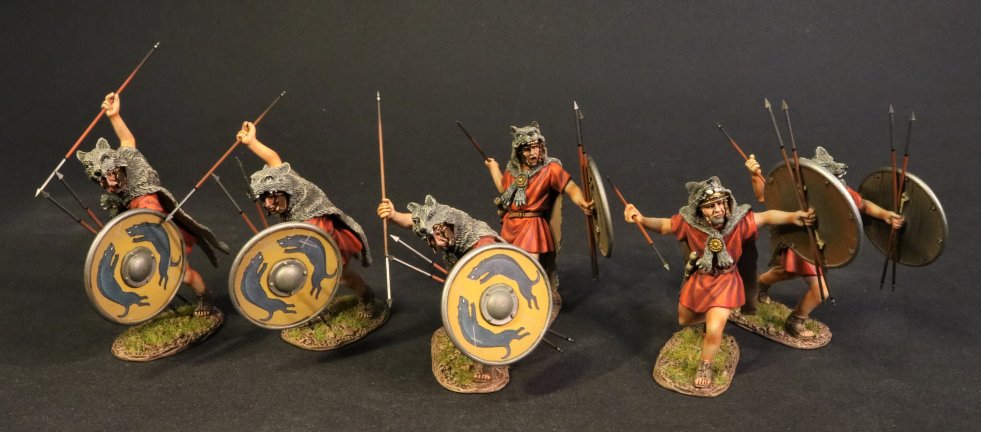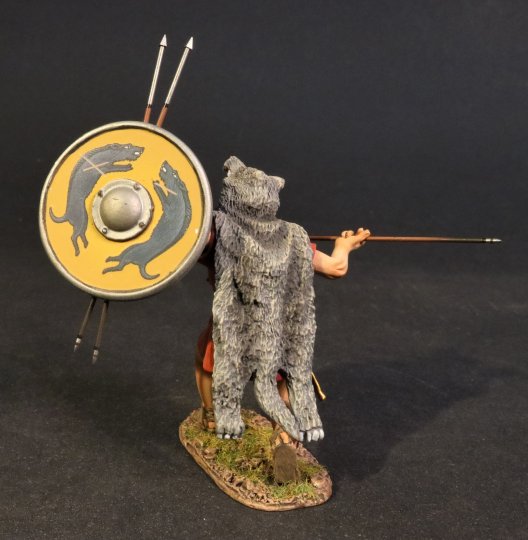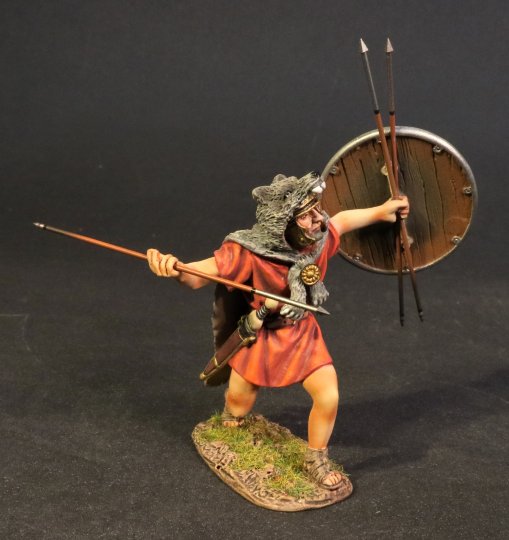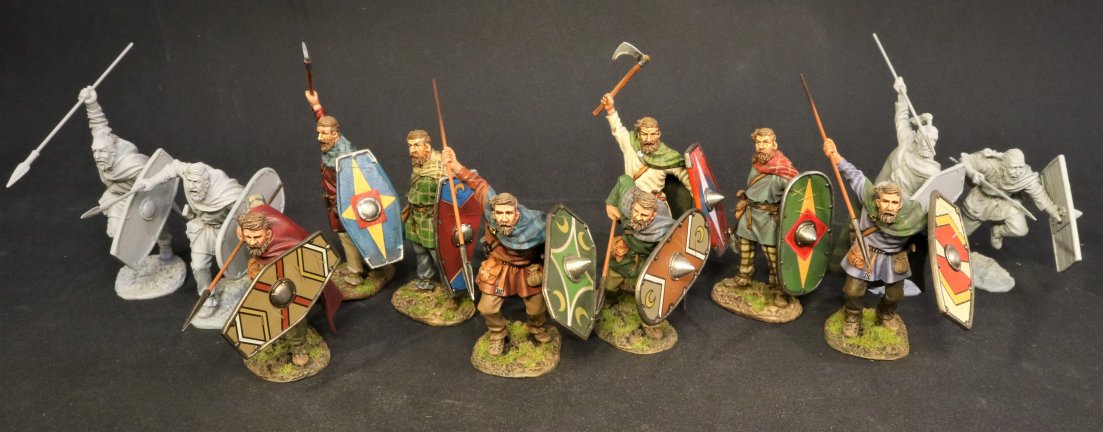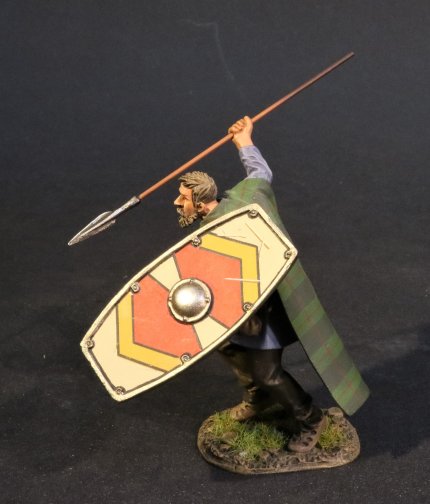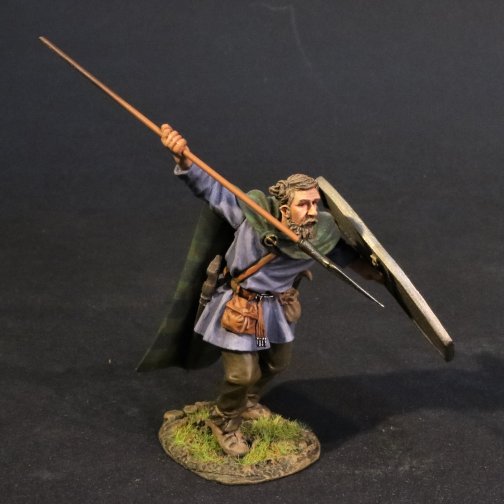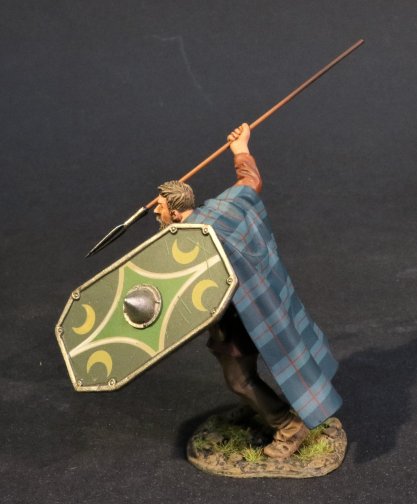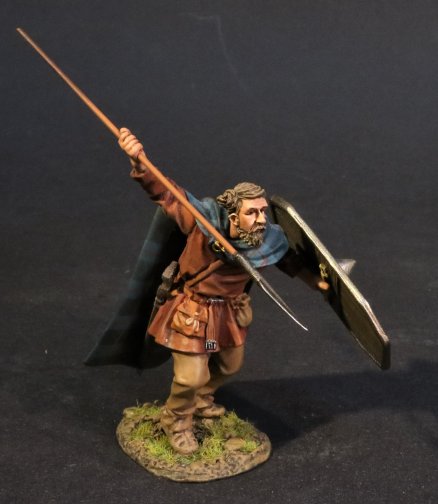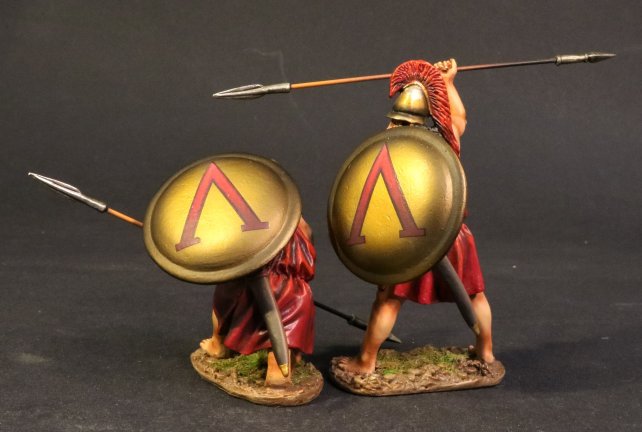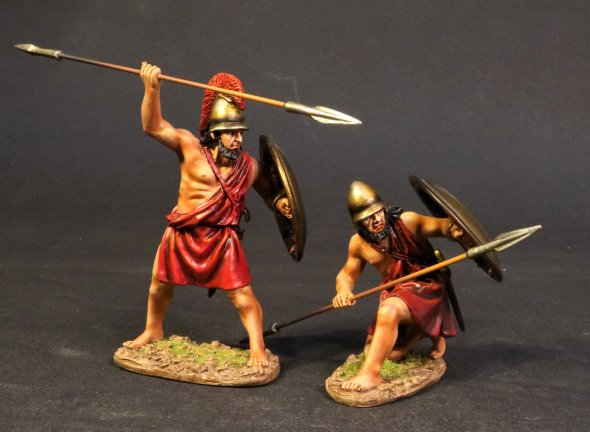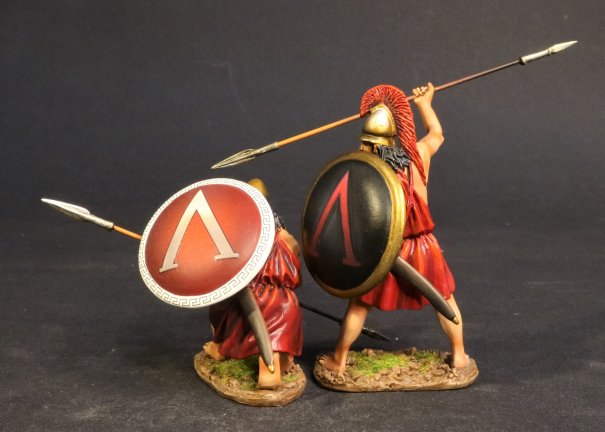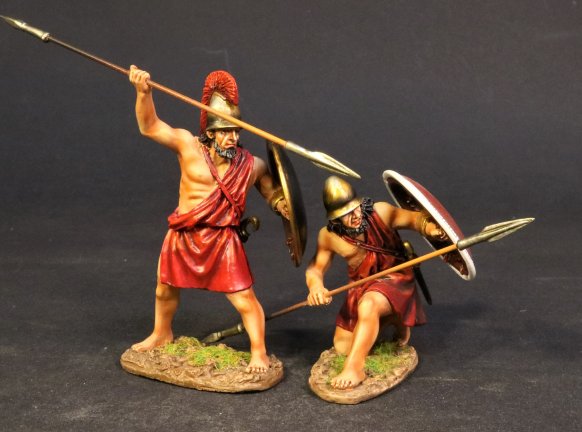NEW RELEASES FOR DECEMBER 2019
THE ANCIENTS COLLECTION
ARMIES AND ENEMIES OF ANCIENT ROME
REPUBLICAN ROMANS
The Roman Republic was the era of classical Roman civilization beginning with the overthrow of the Roman Kingdom, traditionally dated to 509 BC, and ending in 27 BC with the establishment of the Roman Empire. It was during this period that Rome's control expanded from the city's immediate surroundings to hegemony over the entire Mediterranean world.
Roman government was headed by two consuls, elected annually by the citizens and advised by a senate composed of appointed magistrates. As Roman society was very hierarchical by modern standards, the evolution of the Roman government was heavily influenced by the struggle between the patricians, Rome's land-holding aristocracy, who traced their ancestry to the founding of Rome, and the plebeians, the far more numerous citizen-commoners. Over time, the laws that gave patricians exclusive rights to Rome's highest offices were repealed or weakened, and leading plebeian families became full members of the aristocracy. The leaders of the Republic developed a strong tradition and morality requiring public service and patronage in peace and war, making military and political success inextricably linked. Many of Rome's legal and legislative structures (later codified into the Justinian Code, and again into the Napoleonic Code) can still be observed throughout Europe and much of the world in modern nation states and international organizations.
During the first two centuries of its existence, the Roman Republic expanded through a combination of conquest and alliance, from central Italy to the entire Italian peninsula. By the following century, it included North Africa, most of the Iberian Peninsula, and what is now southern France. Two centuries after that, towards the end of the 1st century BC, it included the rest of modern France, Greece, and much of the eastern Mediterranean. By this time, internal tensions led to a series of civil wars, culminating with the buttassination of Julius Caesar, which led to the transition from republic to empire.
Historians have variously proposed Julius Caesar's crossing of the Rubicon River in 49 BC, Caesar's appointment as dictator for life in 44 BC, and the defeat of Mark Antony and Cleopatra at the Battle of Actium in 31 BC. However, most use the same date as did the ancient Romans themselves, the Roman Senate's grant of extraordinary powers to Octavian and his adopting the title Augustus in 27 BC, as the defining event ending the Republic.
THE ROMAN ARMY OF THE MID REPUBLIC 275 – 140BC
The Roman army of the mid-Republic (also known as the manipular Roman army or the "Polybian army"), refers to the armed forces deployed by the mid-Roman Republic, from the end of the Samnite Wars (290 BC) to the end of the Social War (88 BC). The first phase of this army, in its manipular structure (290–ca. 130 BC), is described in detail in the Histories of the ancient Greek historian Polybius, writing before 146 BC.
The central feature of the mid-Republican army was the manipular organisation of its battle-line. Instead of a single, large mass (the phalanx) as in the Greek and Early Roman army, the Romans now drew up in three lines (triplex acies) consisting of small units (maniples) of 120 men, arrayed in chessboard fashion, giving much greater tactical strength and flexibility.
The Republican army of this period, like its earlier forebear, did not maintain standing or professional military forces, but levied them, by compulsory conscription, as required for each campaigning season and disbanded thereafter (although formations could be kept in being over winter during major wars). Service in the legions was limited to property-owning Roman citizens, normally those known as iuniores (age 16-46).
THE VELITES
Velites were the youngest and usually the poorest (being fifth class citizens, with property worth 400–2,500 denarii) soldiers in the legion, and could rarely afford much equipment. They were armed with veretum, light javelins, each with a 90 cm (3 ft) wooden shaft the diameter of a finger, with a c. 10-inch (25 cm) narrow metal point, and tips designed to bend on impact to prevent them being thrown back, similar to the heavier pila of other legionaries. Livy says that they each carried seven javelins, however Roman satirist Lucilius says that they carried five, suggesting that the amount may have changed. The hastati and principes carried gladii, relatively short thrusting swords 74 centimetres (29 inches) in length, as their main weapons, and the velites carried them as backup weapons. They fought in a very loose, staggered formation like most irregular troops, and carried small round shields called parma, 90 cm (3 feet) in diameter.
The velites were placed at the front of the maniples, so that the velites had the chance to prove themselves and win glory by seeking out single combat with an enemy. This is also why they wore highly identifiable wolfskin headdresses
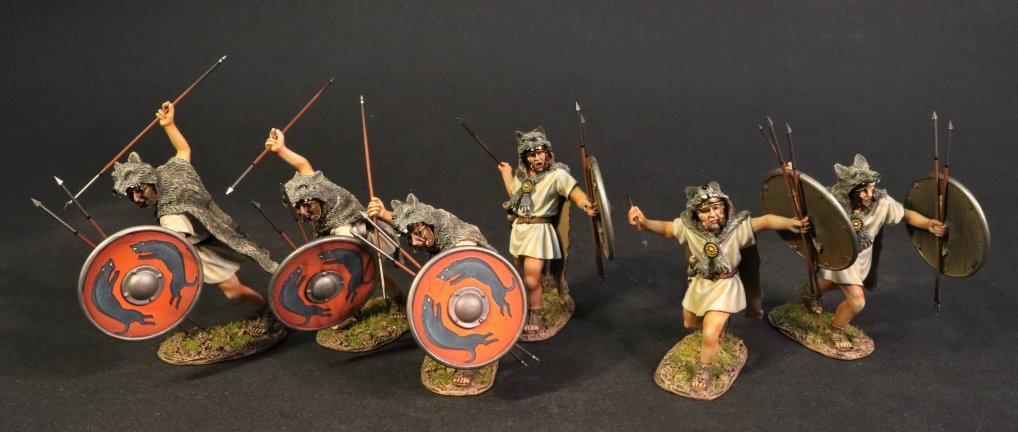
The velites were placed at the front of the maniples, so that the velites had the chance to prove themselves and win glory by seeking out single combat with an enemy. This is also why they wore highly identifiable wolfskin headdresses
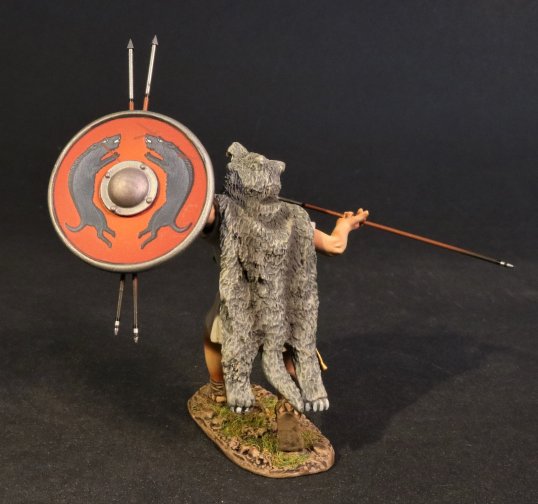
VMRR-01R
ARMIES AND ENEMIES OF ANCIENT ROME,
THE ROMAN ARMY OF THE MID REPUBLIC,
VELES.
(2pcs)
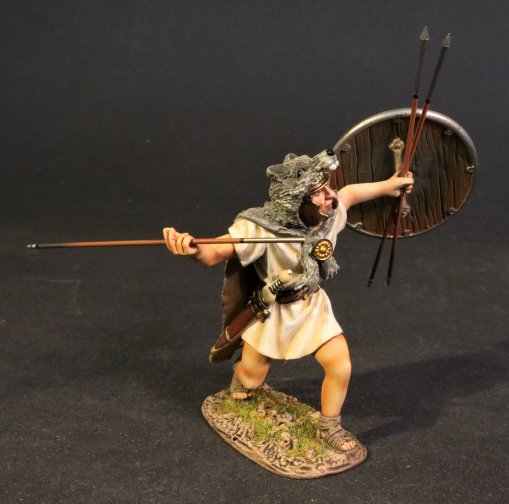
THE ANCIENTS COLLECTION
ARMIES AND ENEMIES OF ANCIENT ROME
REPUBLICAN ROMANS
The Roman Republic was the era of classical Roman civilization beginning with the overthrow of the Roman Kingdom, traditionally dated to 509 BC, and ending in 27 BC with the establishment of the Roman Empire. It was during this period that Rome's control expanded from the city's immediate surroundings to hegemony over the entire Mediterranean world.
Roman government was headed by two consuls, elected annually by the citizens and advised by a senate composed of appointed magistrates. As Roman society was very hierarchical by modern standards, the evolution of the Roman government was heavily influenced by the struggle between the patricians, Rome's land-holding aristocracy, who traced their ancestry to the founding of Rome, and the plebeians, the far more numerous citizen-commoners. Over time, the laws that gave patricians exclusive rights to Rome's highest offices were repealed or weakened, and leading plebeian families became full members of the aristocracy. The leaders of the Republic developed a strong tradition and morality requiring public service and patronage in peace and war, making military and political success inextricably linked. Many of Rome's legal and legislative structures (later codified into the Justinian Code, and again into the Napoleonic Code) can still be observed throughout Europe and much of the world in modern nation states and international organizations.
During the first two centuries of its existence, the Roman Republic expanded through a combination of conquest and alliance, from central Italy to the entire Italian peninsula. By the following century, it included North Africa, most of the Iberian Peninsula, and what is now southern France. Two centuries after that, towards the end of the 1st century BC, it included the rest of modern France, Greece, and much of the eastern Mediterranean. By this time, internal tensions led to a series of civil wars, culminating with the buttassination of Julius Caesar, which led to the transition from republic to empire.
Historians have variously proposed Julius Caesar's crossing of the Rubicon River in 49 BC, Caesar's appointment as dictator for life in 44 BC, and the defeat of Mark Antony and Cleopatra at the Battle of Actium in 31 BC. However, most use the same date as did the ancient Romans themselves, the Roman Senate's grant of extraordinary powers to Octavian and his adopting the title Augustus in 27 BC, as the defining event ending the Republic.
THE ROMAN ARMY OF THE MID REPUBLIC 275 – 140BC
The Roman army of the mid-Republic (also known as the manipular Roman army or the "Polybian army"), refers to the armed forces deployed by the mid-Roman Republic, from the end of the Samnite Wars (290 BC) to the end of the Social War (88 BC). The first phase of this army, in its manipular structure (290–ca. 130 BC), is described in detail in the Histories of the ancient Greek historian Polybius, writing before 146 BC.
The central feature of the mid-Republican army was the manipular organisation of its battle-line. Instead of a single, large mass (the phalanx) as in the Greek and Early Roman army, the Romans now drew up in three lines (triplex acies) consisting of small units (maniples) of 120 men, arrayed in chessboard fashion, giving much greater tactical strength and flexibility.
The Republican army of this period, like its earlier forebear, did not maintain standing or professional military forces, but levied them, by compulsory conscription, as required for each campaigning season and disbanded thereafter (although formations could be kept in being over winter during major wars). Service in the legions was limited to property-owning Roman citizens, normally those known as iuniores (age 16-46).
THE VELITES
Velites were the youngest and usually the poorest (being fifth class citizens, with property worth 400–2,500 denarii) soldiers in the legion, and could rarely afford much equipment. They were armed with veretum, light javelins, each with a 90 cm (3 ft) wooden shaft the diameter of a finger, with a c. 10-inch (25 cm) narrow metal point, and tips designed to bend on impact to prevent them being thrown back, similar to the heavier pila of other legionaries. Livy says that they each carried seven javelins, however Roman satirist Lucilius says that they carried five, suggesting that the amount may have changed. The hastati and principes carried gladii, relatively short thrusting swords 74 centimetres (29 inches) in length, as their main weapons, and the velites carried them as backup weapons. They fought in a very loose, staggered formation like most irregular troops, and carried small round shields called parma, 90 cm (3 feet) in diameter.
The velites were placed at the front of the maniples, so that the velites had the chance to prove themselves and win glory by seeking out single combat with an enemy. This is also why they wore highly identifiable wolfskin headdresses

The velites were placed at the front of the maniples, so that the velites had the chance to prove themselves and win glory by seeking out single combat with an enemy. This is also why they wore highly identifiable wolfskin headdresses

VMRR-01R
ARMIES AND ENEMIES OF ANCIENT ROME,
THE ROMAN ARMY OF THE MID REPUBLIC,
VELES.
(2pcs)

Last edited:


